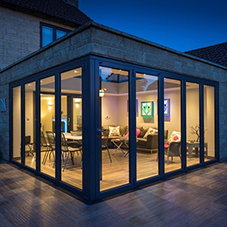Nick Taylor, Managing Director, Silva Timber Products and Sjoerd Bos, VP of Sansin

Spring is the perfect time to spruce up your spaces – both indoors and out. For wood decks, patios, cladding, furniture and floors, consumers are increasingly demanding more eco-friendly, low-VOC (volatile organic compound) stain options. Consumers want a “green” coating, but they are not willing to sacrifice quality.
While many wood stain companies have moved from oil-based to water-based options for environmental reasons, these stains often don’t flow and apply as smoothly as oil-based stains.
Combining the benefits of both oil- and water-based coatings, today’s water-borne alkyd wood finishes, use water as the vehicle to allow oil to penetrate deep into the wood, offering protection from within. Click here to learn more about Sansin’s water-borne stains.
Whether you’re tackling a wood staining project indoors or out, preparation is key. For a deck project, for example, you should spend 95 percent of your time preparing and only five percent actually applying the stain.
Here are a few tips for successful wood finishing projects:
Exterior projects
• Know your wood. Take the type of wood you’re working with into account when you select your stain tint. For example, pressure-treated lumber has a green hue to it that will impact the final color. Similarly, cedar has red undertones that will result in a more crimson outcome.
• Prep the surface. Pressure wash the wood, being careful not to get too close and damage it. Sand with 60-80 grit sandpaper and remove any residue.
• Apply the stain. A heavy, wet coat – especially for the first coat – is what you want. If you’re working on a large surface, only treat a few feet at a time so you can work with a manageable area of wet stain. Allow the stain to dry for 24 hours, then apply the second coat. Back-brush to spread the stain evenly, and always finish with the grain of the wood to prevent lap marks or streaking.

Interior projects
• Select the right wood species. Softer woods like pine and maple can be more difficult to stain, while hard woods, such as oak, are easier.
• Prep the surface. Repair any defects with acrylic-based wood filler. Sand the surface using 120-150 grit sandpaper, working with the grain. Then remove the dust with a vacuum and a damp cloth, making sure the surface is clean and dry.
• Apply the stain. Two coats are usually enough, but you want to apply a generous amount of stain. After the stain dries apply a clear topcoat, brushing with the grain of the wood to avoid streaks. Next, sand the surface gently with 320 grit sandpaper, working with the grain of the wood. After cleaning the surface, close the vents and doors to keep contaminant from landing on the just-finished surface. Finally, apply a thin final clear coat with the grain of the wood.
For more information and advice on your project, contact Silva Timber Products.









